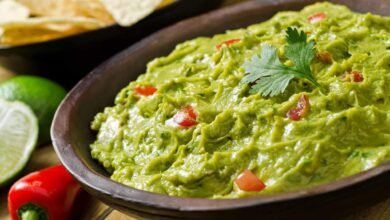Kratom Tea: A Centuries-Old Tradition in Southeast Asia

Kratom tea comes from the leaves of the Mitragyna speciosa tree and has been important in Southeast Asian culture for hundreds of years. People in countries like Thailand, Malaysia, and Indonesia have used this drink as part of their daily lives for a long time. Let’s learn about the history of kratom tea in Southeast Asia and why it matters to people there.
Key Points About Kratom Extract
- Kratom extract is a strong form of kratom from the Mitragyna speciosa tree in Southeast Asia.
- It’s legal to have and buy in the UK, but not approved as medicine.
- Cannot be sold for people to eat or drink in the UK.
- Small amounts might make you feel energetic, while larger amounts might make you sleepy.
- Possible risks include feeling sick, becoming addicted, and reacting badly with other substances.
- Limited research exists on long-term effects and safety.
- It’s important to be cautious and consult a doctor before using it.
Where Kratom Tea Came From
People in Southeast Asia have been using kratom as medicine and a social drink since at least the 1800s, though it was likely used even earlier. The kratom tree grows in countries like Thailand, Indonesia, Malaysia, Myanmar, and Papua New Guinea. Workers discovered that chewing kratom leaves or making tea from them helped reduce fatigue and enhance productivity. This led to kratom becoming a natural way to increase energy and alleviate pain in these regions.
In Thailand, farmers and labourers chewed fresh leaves or brewed strong tea to gain energy and soothe muscle pain after long hours of work. This tradition has been passed down through generations, deeply embedding kratom tea in daily life. Neighbouring countries also adopted kratom for similar purposes, with each culture developing unique preparation methods.
Why Kratom Tea Is Important in Southeast Asian Culture
Kratom tea holds cultural significance in Southeast Asia and is used for various purposes. In some communities, it serves as a social beverage, much like coffee or tea in other cultures. Sharing kratom tea fosters friendships and strengthens community bonds. Many rural families grow kratom trees in their gardens, highlighting its importance in both traditional medicine and daily life.
Uses of kratom tea in Southeast Asia include:
- Pain relief for various ailments.
- Boosting energy and productivity, especially for labour-intensive jobs.
- Supporting individuals recovering from substance dependency.
- Treating diarrhoea and fever as part of traditional medicine.
- Enhancing mood and sociability at gatherings and ceremonies.
- Addressing sexual health concerns.
- Managing diabetes and regulating blood sugar levels.
How People Make and Drink Kratom Tea
The traditional method involves brewing fresh or dried leaves in hot water for 15–20 minutes. Lemon juice is often added to improve flavour and potency. The Kratom tea can be consumed hot or cold, with optional honey or sugar to counteract bitterness.
Other methods include:
- Chewing fresh leaves for quick effects.
- Smoking dried leaves, though less common.
- Mixing powdered leaves with water for medicinal paste.
- Adding kratom powder to food or drinks.
- Rolling fresh leaves into a ball, similar to chewing tobacco.
- Using concentrated kratom extracts for stronger effects.
The preparation and dosage vary based on the desired effect and individual tolerance. Lower doses provide stimulation, while higher doses induce relaxation. Experienced users in Southeast Asia carefully tailor their consumption to meet specific needs.
The Science of Kratom Tea
Kratom contains over 40 alkaloids, with mitragynine and 7-hydroxymitragynine being the most notable. These compounds interact with the brain’s opioid receptors, offering pain relief and energy boosts. However, they also carry risks of addiction.
Research suggests potential applications for managing chronic pain, anxiety, depression, and drug withdrawal. However, more studies are needed to confirm its safety and efficacy. Variability in alkaloid content among kratom products complicates standardisation and regulation.
Laws and Debates About Kratom
Kratom laws vary widely:
- In Thailand, kratom was legalised for medical use in 2021, recognizing its traditional role and therapeutic potential.
- Malaysia and other nearby countries maintain bans due to misuse concerns.
- In the United States, legality differs by state, and debates about nationwide prohibition persist.
Globally, regulatory challenges include ensuring product purity and preventing misuse. Health authorities remain cautious due to insufficient evidence of long-term safety.
Kratom Today and Around the World
Interest in kratom has expanded beyond Southeast Asia, prompting more research and discussions about its benefits and risks. Online communities share experiences, providing anecdotal insights into its effects.
While some report relief from pain, anxiety, and substance dependency, others caution about potential dependency and adverse interactions with medications. Responsible use and informed decision-making are crucial.
For more information on kratom products, including kratom extract, refer to trusted sources and check local laws.
Conclusion
Kratom tea’s rich history in Southeast Asia reflects its role as medicine, a social drink, and a tool for enhancing productivity. Its global popularity underscores the need for balanced discussions about traditional practices, scientific research, and legal frameworks.
If you’re considering trying kratom tea or products, consult a doctor and verify legality in your region. Responsible use and further studies will shape kratom’s future, ensuring safe and informed integration into modern life.







